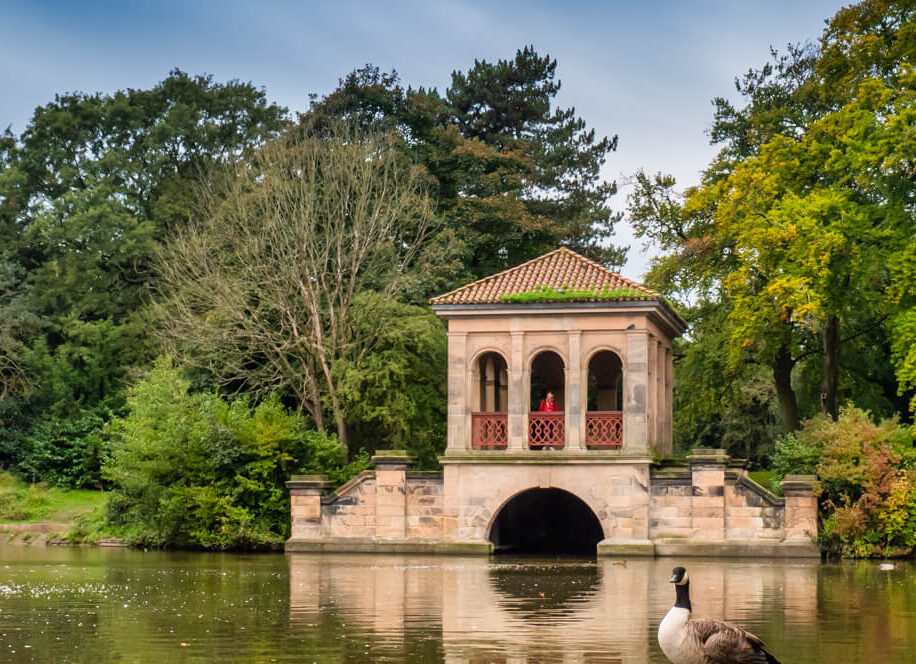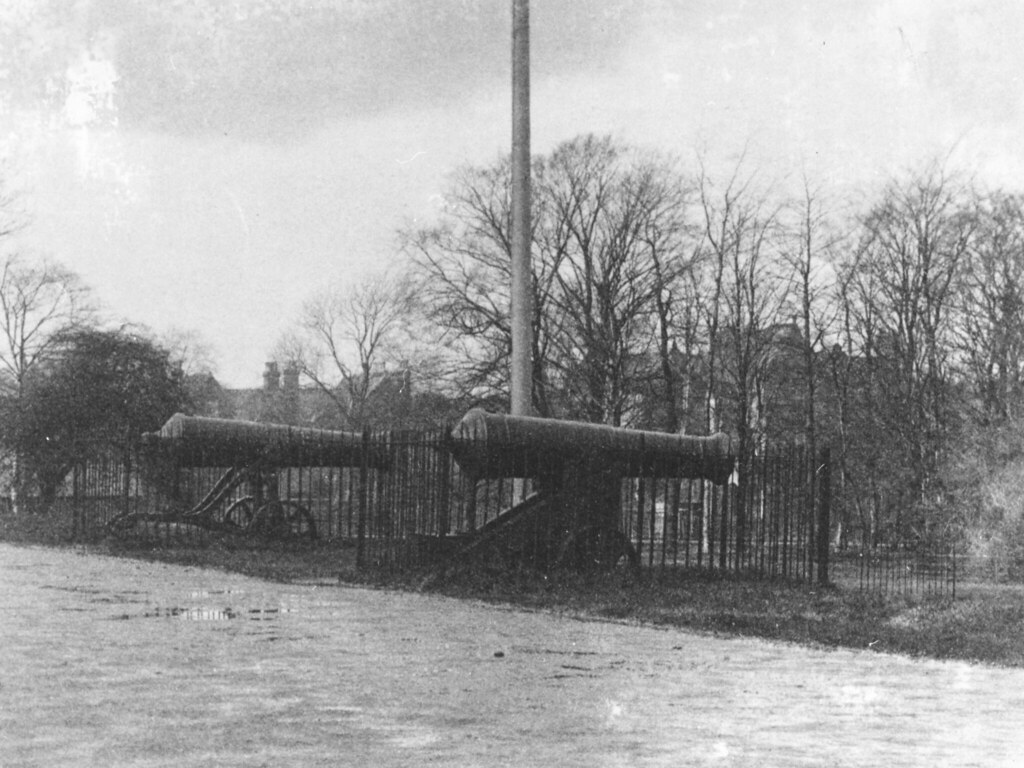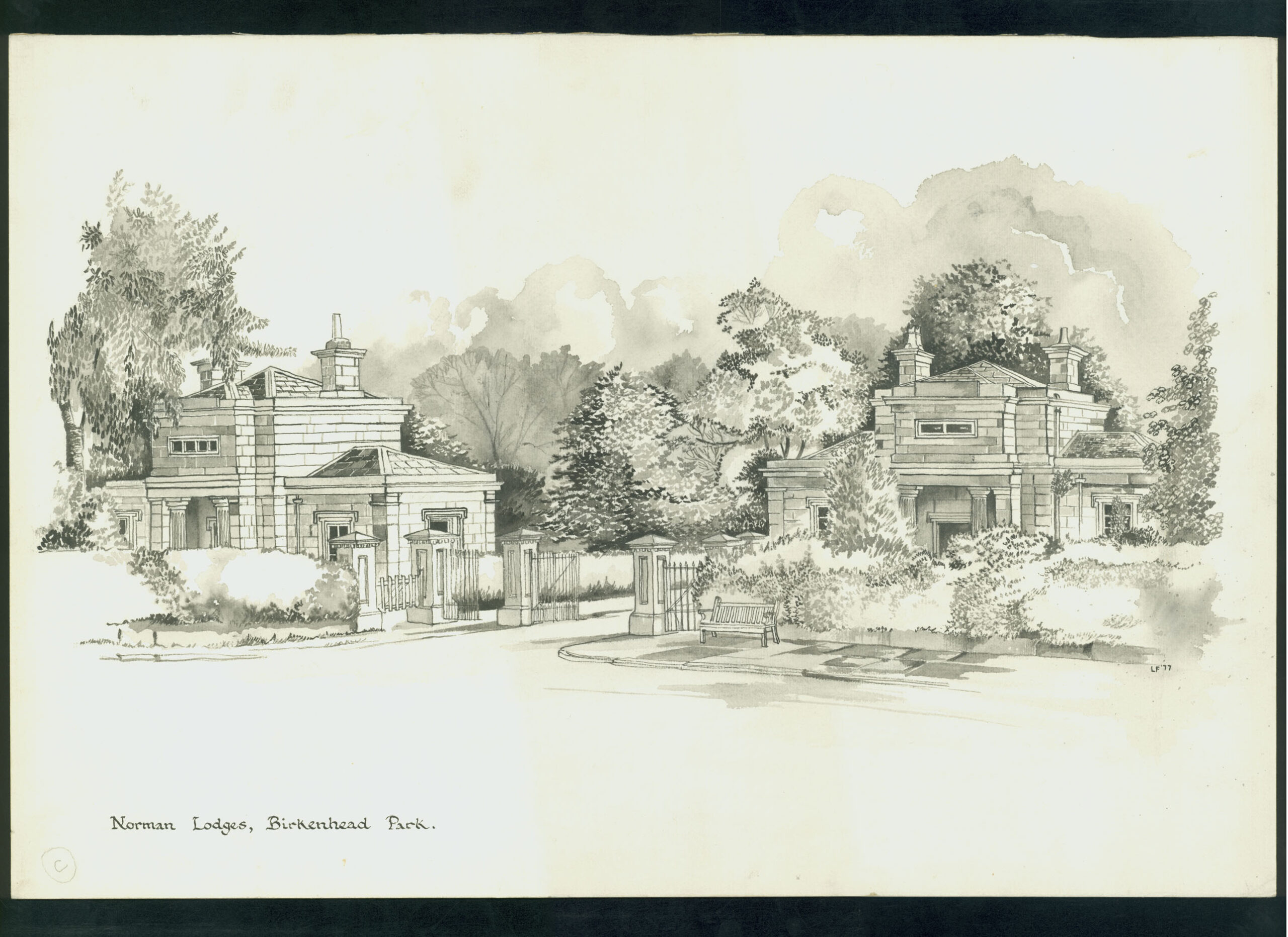Heritage Trail
-

The Grand Entrance dates back to when the park was created. Although the Grand Entrance today appears as a focal point standing on its own, the original intention was that the two fields flanking it would have been developed with Victorian villas (like those along Ashville and Cavendish Roads). It was designed in the classical tradition of Ionic architecture and received some repair of its structure in the 2000s. Both lodges are occupied – by the Council’s parks staff and a charity for young people respectively.
-

The Jackson Memorial ‘Fountain’ was erected in 1860 to commemorate the death of John Somerville Jackson, the brother of Sir William Jackson, who had played a key role in authorising the creation of the park. Its construction was financed by public money, and it provided visitors with piped drinking water of good quality, at a time when the water supply for some working-class residents in Birkenhead was still dire.
-

Historical timber bridge in Birkenhead Park, 1860
This contemporary timber structure was built during the 2000s major restoration programme to reflect the former ‘rustic bridge’ that was there when the park was created.
-

- The Swiss Bridge is one of the park’s original structures. Although often referred to as ‘The Chinese Bridge’, its design was inspired by medieval covered bridges such as those in Luzern, Switzerland.
-

The two-storey boathouse is one of the most striking landmarks within the park, and once housed a gondola, canoes and Chinese junks. It is built of local stone in a Roman-style and has a fine pebble mosaic floor (created by Maggy Howarth in 1989).
-
 As its name suggests, this was once a field used for grazing, where local farmers would bring in sheep to make use of the area. During World War II, this area was the site of a Spitfire Crash following a test flight over the River Mersey. The engine of this craft was recovered in 2007, and is on display in Fort Perch Rock in New Brighton.
As its name suggests, this was once a field used for grazing, where local farmers would bring in sheep to make use of the area. During World War II, this area was the site of a Spitfire Crash following a test flight over the River Mersey. The engine of this craft was recovered in 2007, and is on display in Fort Perch Rock in New Brighton. -

Designed by Joseph Paxton, after his similar work at Chatsworth House, the rockery symbolises a rock fall in the Alps, with a view beyond to the Swiss Bridge. Much of the sandstone used was salvaged from excavation works from the creation of Birkenhead’s first dock.
-
The Figure of Eight Lake was originally formed in the 1850s by Edward Kemp in response to drainage problems. In 1957 the lake was drained and a ‘blind garden’ with an array of fragrant plants was created in its place.
-

When Joseph Paxton was drawing his plans for the park, he imagined that each of the eight park lodges would have a different architectural style, so visitors could feel like travelling western Europe by simply strolling through the park: The Gothic Lodge (which is actually more Elizabethan in style than Gothic!) is one of the eight park lodges.
-

When Joseph Paxton was drawing his plans for the park, he imagined that each of the eight park lodges would have a different architectural style, so visitors could feel like travelling western Europe by simply strolling through the park: The Italian Lodge was once home to Edward Kemp (1817-1891), Birkenhead Park’s Superintendent. Renaissance in style, the building is a miniature version of Queen Victoria’s Osborne House. It is part of Paxton’s vision of displaying different types of architecture for people walking around the park.
-

Established a year before Birkenhead Park officially opened, the original Gothic in style Cricket pavilion is Grade II listed and one of the oldest in the country.
-

The Eisteddfod Commemoration Stone is made from red Aberdeen granite. It marks the site of the Royal Welsh National Eisteddfod – an annual celebration of Welsh language, poetry and music – which was hosted in the park in September 1917.
-

Two cannons from the Crimean War were initially put in the park in 1856. They were subsequently placed behind iron railings on the top of what is now known as Cannon Hill. They were removed in 1940 as an attempt by the Government to collect scrap metal for war production.
-

Drawing of Central Lodge by Lydia Fitzpatrick, 1977
When Joseph Paxton was drawing his plans for the park, he imagined that each of the eight park lodges would have a different architectural style, so visitors could feel like travelling western Europe by simply strolling through the park: The Central Lodge is an 18th century English style pavilion. It has fluted chimneys, a balustraded parapet and decorative pilasters.
-

A Palm House was erected in the Upper Park in 1921. It was demolished in 1950 due to serious damage during the 1941 Blitz. It was then replaced by a conservatory which stood for another 40 years.
-
 In Joseph Paxton’s original plans for the park, two wooden bridges gave access to the Upper Lake Island. Little is known about these bridges, and they disappear from maps after 1859.
In Joseph Paxton’s original plans for the park, two wooden bridges gave access to the Upper Lake Island. Little is known about these bridges, and they disappear from maps after 1859. -

Drawing of Norman Lodges by Lydia Fitzpatrick, 1977
When Joseph Paxton was drawing his plans for the park, he imagined that each of the eight park lodges would have a different architectural style, so visitors could feel like travelling western Europe by simply strolling through the park: The Norman Lodges are not actually Norman in style but ‘Greek revival’, which was a popular architecture style in the early 1800s.
-

Drawing of Castellated Lodge by Lydia Fitzpatrick, 1977
When Joseph Paxton was drawing his plans for the park, he imagined that each of the eight park lodges would have a different architectural style, so visitors could feel like travelling western Europe by simply strolling through the park: The Castellated Lodge has two stories and features a series of battlements and tourelles. It has angled buttresses, and a projecting parapet.
